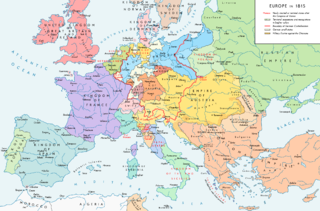
The Congress of Vienna of 1814–1815 was a series of international diplomatic meetings to discuss and agree upon a possible new layout of the European political and constitutional order after the downfall of the French Emperor Napoleon Bonaparte. Participants were representatives of all European powers and other stakeholders. The Congress was chaired by Austrian statesman Klemens von Metternich, and was held in Vienna from September 1814 to June 1815.

Klemens Wenzel Nepomuk Lothar, Prince of Metternich-Winneburg zu Beilstein, known as Klemens von Metternich or Prince Metternich, was a conservative Austrian statesman and diplomat who was at the center of the European balance of power known as the Concert of Europe for three decades as the Austrian Empire's foreign minister from 1809 and Chancellor from 1821 until the liberal Revolutions of 1848 forced his resignation.
The Treaty of Paris, signed on 30 May 1814, ended the war between France and the Sixth Coalition, part of the Napoleonic Wars, following an armistice signed on 23 April between Charles, Count of Artois, and the allies. The treaty set the borders for France under the House of Bourbon and restored territories to other nations. It is sometimes called the First Peace of Paris, as another one followed in 1815.

The Treaty of Paris of 1815, also known as the Second Treaty of Paris, was signed on 20 November 1815, after the defeat and the second abdication of Napoleon Bonaparte. In February, Napoleon had escaped from his exile on Elba, entered Paris on 20 March and began the Hundred Days of his restored rule. After France's defeat at the hands of the Seventh Coalition at the Battle of Waterloo, Napoleon was persuaded to abdicate again, on 22 June. King Louis XVIII, who had fled the country when Napoleon arrived in Paris, took the throne for a second time on 8 July.
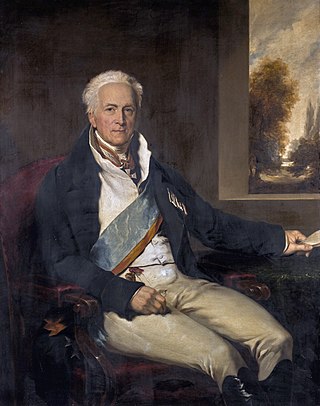
Karl August Fürst von Hardenberg was a Prussian statesman and Chief Minister of Prussia. While during his late career he acquiesced to reactionary policies, earlier in his career he implemented a variety of Liberal reforms. To him and Baron vom Stein, Prussia was indebted for improvements in its army system, the abolition of serfdom and feudal burdens, the throwing open of the civil service to all classes, and the complete reform of the educational system.
The Congress of Troppau was a conference of the Quintuple Alliance to discuss means of suppressing the revolution in Naples of July 1820, and at which the Troppau Protocol was signed on 19 November 1820.

The Concert of Europe was a general agreement among the great powers of 19th-century Europe to maintain the European balance of power, political boundaries, and spheres of influence. Never a perfect unity and subject to disputes and jockeying for position and influence, the Concert was an extended period of relative peace and stability in Europe following the Wars of the French Revolution and Napoleonic Wars which had consumed the continent since the 1790s. There is considerable scholarly dispute over the exact nature and duration of the Concert. Some scholars argue that it fell apart nearly as soon as it began in the 1820s when the great powers disagreed over the handling of liberal revolts in Italy, while others argue that it lasted until the outbreak of World War I and others for points in between. For those arguing for a longer duration, there is generally agreement that the period after the Revolutions of 1848 and the Crimean War (1853–1856) represented a different phase with different dynamics than the earlier period.

The Austrian Empire, officially known as the Empire of Austria, was a multinational European great power from 1804 to 1867, created by proclamation out of the realms of the Habsburgs. During its existence, it was the third most populous monarchy in Europe after the Russian Empire and the United Kingdom. Along with Prussia, it was one of the two major powers of the German Confederation. Geographically, it was the third-largest empire in Europe after the Russian Empire and the First French Empire.
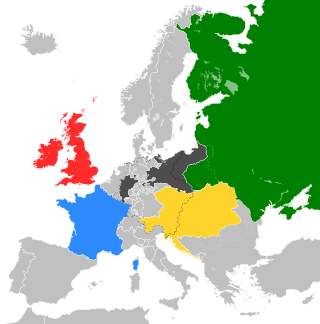
The Quintuple Alliance came into being at the Congress of Aix-la-Chapelle in 1818, when France joined the Quadruple Alliance created by Austria, Prussia, the Russian Empire, and the United Kingdom of Great Britain and Ireland. The European peace settlement concluded at the Congress of Vienna in 1815.

The Holy Alliance, also called the Grand Alliance, was a coalition linking the monarchist great powers of Austria, Prussia, and Russia, which was created after the final defeat of Napoleon at the behest of Emperor (Tsar) Alexander I of Russia and signed in Paris on 26 September 1815.
The Conservative Order was the period in political history of Europe after the defeat of Napoleon in 1815. From 1815 to 1830, a conscious program by conservative statesmen, including Metternich and Castlereagh, was put into place to contain revolution and revolutionary forces by restoring the old orders, particularly the previously-ruling aristocracies. On the other hand, in South America, in light of the Monroe Doctrine, the Spanish and the Portuguese colonies gained independence.
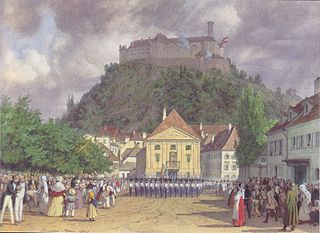
The Congress of Laibach was a conference of the allied sovereigns or their representatives, held in 1821 as part of the Congress System which was the decided attempt of the five Great Powers to settle international problems after the Napoleonic Wars through discussion and collective weight rather than on the battlefield. A result of the Congress was the authorization of Austrian intervention in the Kingdom of the Two Sicilies in order to quell a liberal uprising.
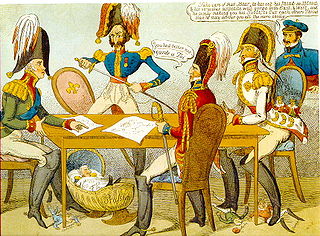
The Congress of Verona met at Verona from 20 October to 14 December 1822 as part of the series of international conferences or congresses that opened with the Congress of Vienna in 1814–15, which had instituted the Concert of Europe at the close of the Napoleonic Wars.
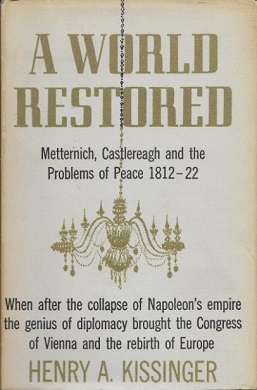
A World Restored: Metternich, Castlereagh and the Problems of Peace 1812–1822 is a book by scholar and future United States Secretary of State, Henry Kissinger.
The Treaty of Chaumont was a series of separately-signed but identically-worded agreements in 1814 between the Austrian Empire, the Kingdom of Prussia, the Russian Empire and the United Kingdom. They were dated 1 March 1814, although the actual signings took place on 9 or 19 March. The treaty was intended to draw the powers of the Sixth Coalition into a closer alliance in case France rejected the peace terms they had recently offered. Each power agreed to put 150,000 soldiers in the field against France and to guarantee for twenty years the European peace against French aggression.

The Anglo-Austrian Alliance connected the Kingdom of Great Britain and the Habsburg monarchy during the first half of the 18th century. It was largely the work of the British Whig statesman Thomas Pelham-Holles, 1st Duke of Newcastle, who considered an alliance with Austria crucial to prevent the further expansion of French power.
Great Negotiations: Agreements that Changed the Modern World is a 2010 book by Fredrik Stanton which presents narratives from modern diplomacy.

Diplomatic timeline for 1815
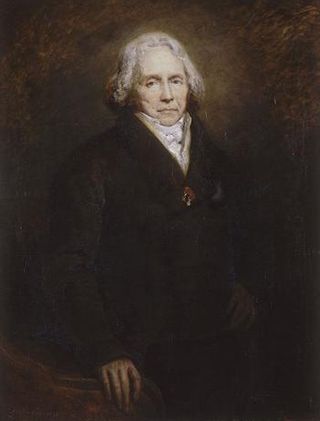
The Secret Treaty of Vienna was a defensive alliance signed on 3 January 1815 by France, the Austrian Empire and Great Britain. It took place during the Congress of Vienna, negotiations on the future of Europe following Napoleon's defeat in the War of the Sixth Coalition.

The Duke of Richelieu is an 1818 portrait painting by the British artist Sir Thomas Lawrence of the French Prime Minister Armand Emmanuel de Vignerot du Plessis, 5th Duke of Richelieu. Richelieu was a leading statesman in Restoration France serving twice as premiere during the reign of Louis XVIII, having previously spent many years in exile. It was painted during the Congress of Aix-la-Chapelle.
























